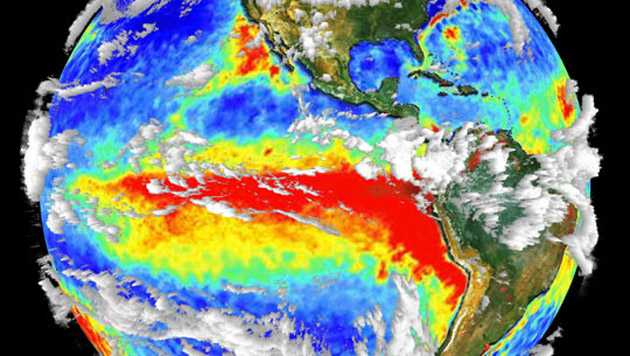COLLEGE PARK, MD. U.S. – During July, ENSO-neutral continued, as equatorial sea surface temperatures (SSTs) were near average across most of the Pacific Ocean, according to the U.S. National Oceanic and Atmospheric Administration (NOAA).
The latest weekly Niño SST index values were close to zero in all four Niño regions, having recently decreased from higher levels in the Niño-4 and Niño-3.4 regions.
The upper-ocean heat content anomaly was near average during July, reflecting below-average temperatures along the thermocline across the central and eastern Pacific overlain by slightly above-average temperatures.
Tropical convection near average
Tropical convection was near average over the eastern half of the Pacific and enhanced over the western Pacific and the Maritime Continent.
The lower-level trade winds were slightly enhanced near the International Date Line, and upper-level winds were near average over most of the tropical Pacific. Overall, the ocean and atmosphere system remains consistent with ENSO-neutral.
The majority of models favor ENSO-neutral through the remainder of 2017
These predictions, along with the demise of the recent Pacific warmth and continued near-average atmospheric conditions over the Pacific, lead forecasters to favor ENSO-neutral through the winter.
However, some chance for El Niño (15-20%) or La Niña (25-30%) remains during the winter.
Also, ENSO-neutral conditions are predicted for the upcoming peak months (August-October) of the Atlantic hurricane season.
In summary, ENSO-neutral is favored (~85% chance during Jul-Sep, decreasing to ~55% during Dec-Feb) through the Northern Hemisphere winter 2017-18 (click CPC/IRI consensus forecast for the chance of each outcome for each 3-month period).


















